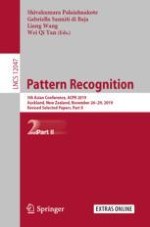2020 | OriginalPaper | Buchkapitel
Early Diagnosis of Alzheimer’s Disease Based on Selective Kernel Network with Spatial Attention
verfasst von : Huanhuan Ji, Zhenbing Liu, Wei Qi Yan, Reinhard Klette
Erschienen in: Pattern Recognition
Aktivieren Sie unsere intelligente Suche, um passende Fachinhalte oder Patente zu finden.
Wählen Sie Textabschnitte aus um mit Künstlicher Intelligenz passenden Patente zu finden. powered by
Markieren Sie Textabschnitte, um KI-gestützt weitere passende Inhalte zu finden. powered by
